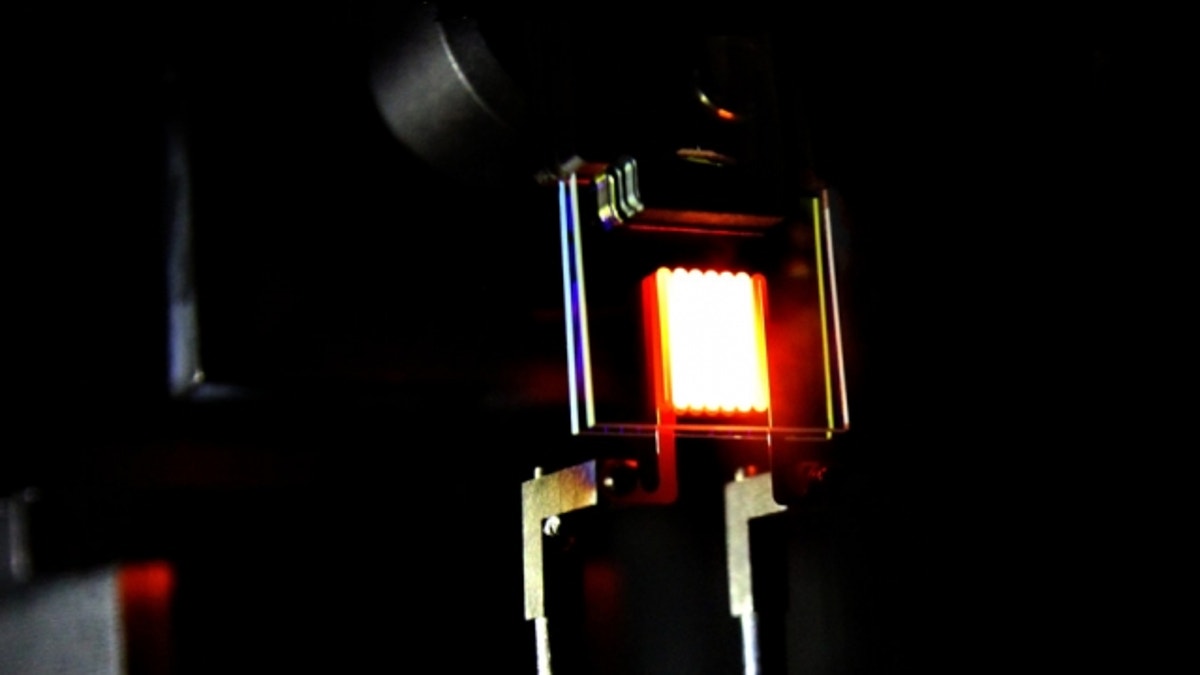
A proof-of-concept device built by MIT researchers demonstrates the principle of a two-stage process to make incandescent bulbs more efficient. This device already achieves efficiency comparable to some compact fluorescent and LED bulbs. (MIT researchers)
A team of researchers at MIT and Purdue University may have just saved the traditional light bulbs from going the way of the abacus.
It was thought these century-old bulbs would soon be replaced by more efficient compact fluorescent bulbs (CFLs) and newer light-emitting diode bulbs (LEDs). The problem was that incandescent bulbs – developed commercially by Thomas Edison – are incredibly inefficient. Almost 95 percent of the energy that goes into them is wasted, most of it as heat.
Related: Holy Braille: Scientists developing Kindle-style tablet for the blind
But in a study in the journal Nature Nanotechnology, researchers have come up with a way to capture much of this lost energy.
They have done it by creating a two-stage process. The first involves a conventional heated metal filament, with all its attendant losses. But instead of allowing the waste heat to dissipate in the form of infrared radiation, secondary structures surrounding the filament capture this radiation and reflect it back to the filament to be re-absorbed and re-emitted as visible light.
Related: Revolutionary new helmet deforms to absorb impacts, could put an end to concussions
These structures, a form of photonic crystal, are made of Earth-abundant elements and can be made using conventional material-deposition technology.
The new bulb has the potential to be much more energy efficient. While the efficiency of conventional bulbs is less than 3 percent, these new bulbs could reach efficiencies as high as 40 percent – or twice that of the most advanced commercial LEDs.
Still, the team has work to do. So far, the first proof-of-concept units made by the team only managed to achieve about 6.6 percent efficiency.




















